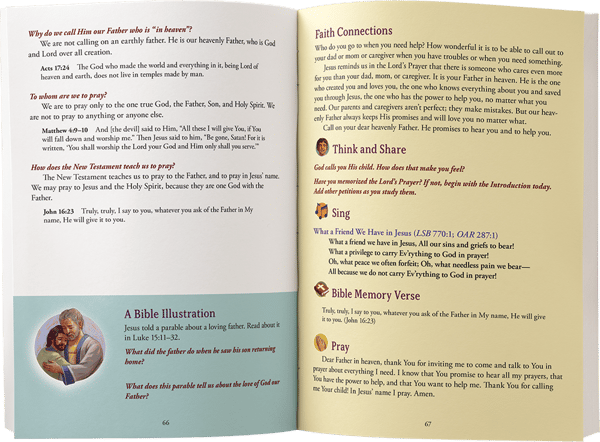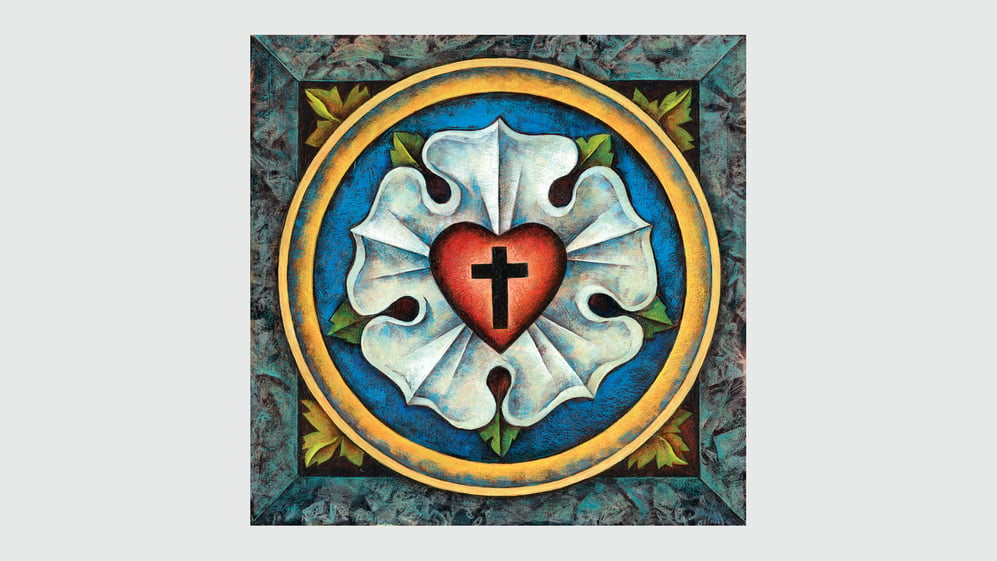What do we do with Luther’s Small Catechism while students are still in elementary levels? Should we leave it on the shelf until our students enter confirmation class? Absolutely not! As these children develop academically, socially, emotionally, and physically; they will be developing spiritually as well. Catechizing your elementary school students is crucial to nurturing their faith development. When we use Luther’s Small Catechism to teach students about the Christian faith, we give them a sure foundation that will carry them to their confirmation classes and for the rest of their lives.
Using such a complex book with young children may seem difficult. However, there are several ways to teach your elementary students about Luther’s Small Catechism.
Teach Through Bible Narratives
For an eight-year-old student, learning about the Six Chief Parts of the Small Catechism can be overwhelming. While the Ten Commandments are pretty straight forward, Confession and Absolution are more abstract. Instead of starting by explaining the ins and outs of the Office of the Keys, teach your students first about the Prodigal Son, or King David’s repentance and forgiveness. Then explain Confession and Absolution, and your students will be more apt to understand. Teaching through Bible stories is always a good idea. If a student already knows the Bible account, this is especially helpful because they will be able to bridge their old learning with new learning.

Luther's Small Catechism for Kids (shown above) connects a Bible story to each of the chief parts in the catechism.
Repetition and Meaning
You may have heard it said that something needs to be repeated seven times before you can truly memorize it. Still, others have claimed that repetition needs to occur seventeen times before it is committed to memory! While there may be some debate over this, one thing is for sure; repetition is necessary. Luckily, your elementary students are at a prime age for memorization. Rather than waiting until confirmation for your students to memorize the Catechism, starting in first or second grade is much better for memory work. If you are teaching the Lord’s Prayer, for example, have the whole class pray it together.

Memorization may have a poor reputation in schools today, but in regards to learning the Small Catechism, it is invaluable. In fact, memorizing is not the problem, but rather rote memorization that lacks meaning and explanation. This means that when you are teaching your students a new part of the Small Catechism, explain and discuss it. First through fourth grade students are developing cognitively so that they start making connections and looking for reasons behind things. It’s so important to explain what the students are learning and what it means for their lives as God’s children.
Take It Home
As effective as the Lutheran schoolteacher, children’s ministry director or Sunday School teacher can be, the primary teacher of the faith is a child’s parents or guardians. As a teacher, you can send your students home with discussion points, tips for parents, etc.
 If you are the parent of an elementary student, open up the Catechism with your child! My First Catechism and Luther's Small Catechism for Kids are great resources for young children and can even be used as a family devotion. Just read through one section at a time, so that your child can really absorb what their learning.
If you are the parent of an elementary student, open up the Catechism with your child! My First Catechism and Luther's Small Catechism for Kids are great resources for young children and can even be used as a family devotion. Just read through one section at a time, so that your child can really absorb what their learning.
Elementary school is a busy time for students. They are learning and developing skills, strengths and talents. The most important growth is in their faith, and you are an important part in this process!














